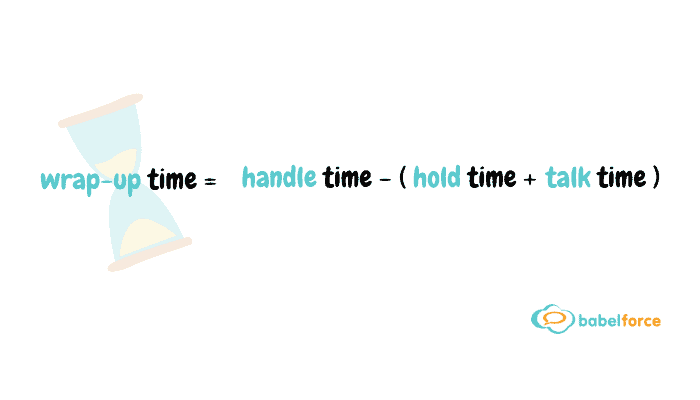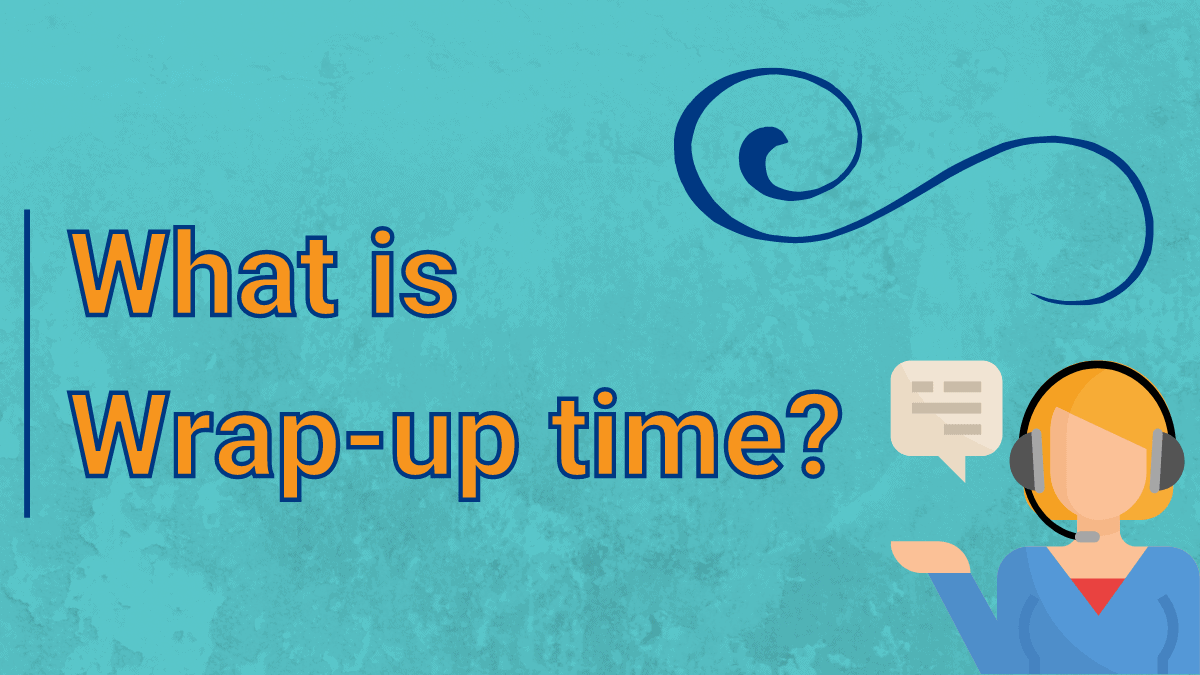Every call that a contact center agent handles leaves them with tasks to perform once the call ends. The time spent on those tasks is call wrap-up time. This usually includes recording call outcomes, escalating complaints or forwarding information the customer requested.
The agent can only be available for the next call once these tasks have been performed.
Defining Wrap-up time
“The time it takes for an agent to perform call-related tasks after the call itself has ended. These include recording outcomes, assigning capable actors or escalating a complaint to relevant channels.”
Wrap-up time can contribute significantly to the total time spent handling an issue.
Let’s take a look at a few after-call activities that take place during wrap-up time:
- Data entry: noting the category of concern and recording caller details as well as call outcomes. After the call, the agent enters data into the call center CRM or other data systems.
- Contacting other departments: issues can often be solved by collaborating with other departments and confirming/alerting them of the caller’s concerns.
- Sending required documents: the caller might be looking for resources. Following up with an email and the required documents or instructions will resolve their concern.
These three form the bulk of most after-call work.
Measuring wrap-up time
The picture below shows an equation used to measure the call wrap-up time:

Handle time: everything from when the caller is connected to an agent to when the caller disconnects.
Hold time: not all silent time is hold time – only when the agent has actively placed the caller on hold.
Talk time: the productive, conversation-filled moments during a call.
Most call center software applications can measure the variables in the equation above to the nearest second. Once you have figured out the average call wrap-up time for your contact center the next step is reducing that number bit by bit.

Tips on how to reduce wrap-up time
If you feel the time your agents are spending resolving call issues is too long, chances are you’re right. Keeping this time short is an important part of maintaining agent availability. Automating parts of wrap-up can also drastically improve the agent experience.
Agents can take more calls, and also spend a greater proportion of their time interacting with customers, rather than entering data.
Let’s discuss how you can achieve this and other efficiencies below.
Automate and integrate with NLU systems
Automatic escalation is possible when you integrate Natural Language Understanding capable systems with your call handling tools.
This way, the following happens during each call:
- Artificial intelligence recognizes keywords as clues (and tags) about the conversations between customers and agents
- The keywords picked are used to automatically categorize the conversations
- Team members along your customer service chain are alerted and can listen in during or after a call ends to continue with the customer and their requirements
- As soon as the call ends, the agent becomes available for the next call
This approach can substantially reduce call wrap-up time. See how the agent can now take more calls? This means fewer callers listening to tiresome music in a queue.
Streamline common query solutions
Some callers need assistance on issues like resetting passwords or checking their account status. A lot of them may be looking for updates on queries previously discussed with the support agents.
Such calls are counter-productive. To make life easier for customers, create systems that allow callers to resolve issues without needing to speak to an agent at all.
A few suggestions for achieving this:
- Document processes like resetting passwords and checking account status. Use how-to videos. Each time a person signs up for your services, place them on cycling emails reminding them to access and use these resources.
- If a caller is in need of forms or other paperwork, then you should take their request as if everyone asked for the resource. Have sections on your website that provide resources commonly asked for by customers.
- Use interactive voice response (IVR) pathways to help the callers hell-bent on speaking on the phone while resetting their password. You can slash average handling time this way.
Applying these tips will significantly reduce the amount of time required to satisfy callers.
You don’t have to share jokes with your customers to keep them happy.
Providing exceptional service, resolving issues before they become complaints, and delivering on your promises will do the trick.
The shorter your average call wrap-up time, the more opportunity you have to please extra customers.
If not, all is not lost…




